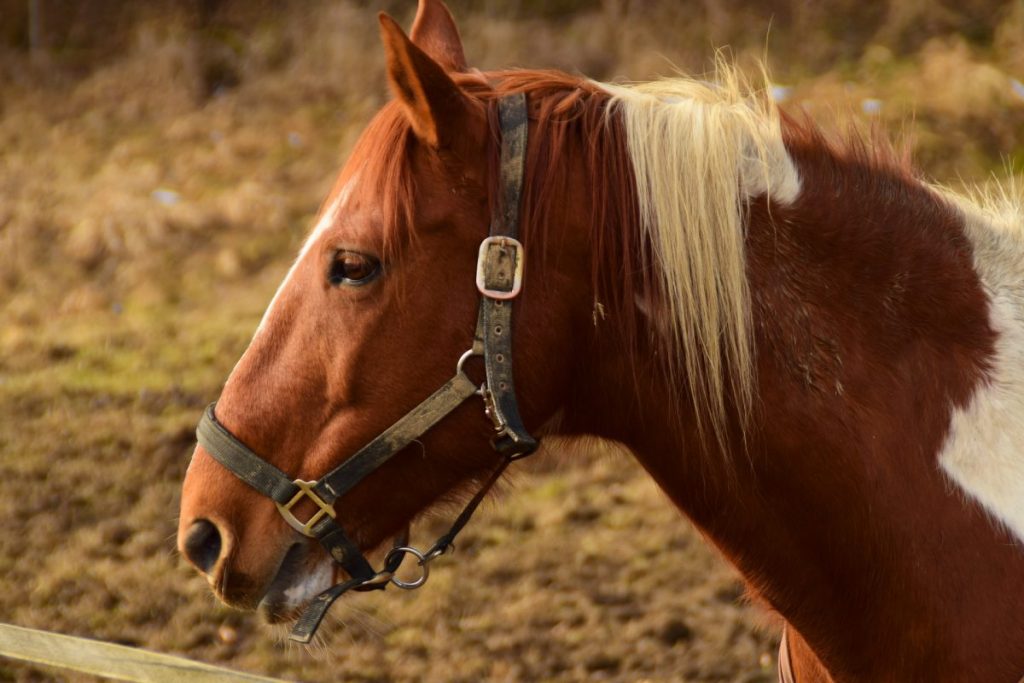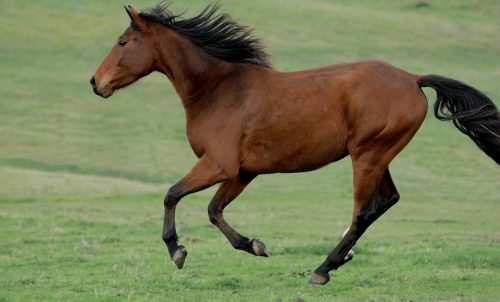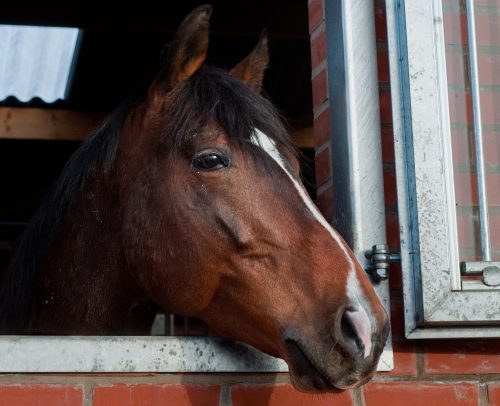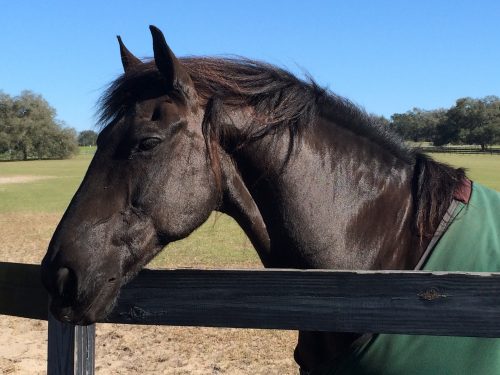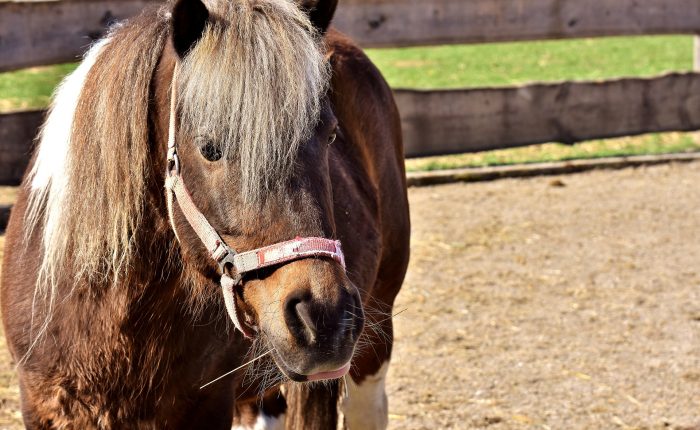Laminitis is a very serious condition that occurs in horses. It can occur severely and suddenly, or mildly and recurring, but either way, it is best if caught early and brought to the attention of your veterinarian. Taking action early gives your horse the best chance of recovery.
If you suspect your horse might have laminitis, there are several signs you can look for. But first, it’s important to understand what laminitis is and how your horse can develop the disease.
What is laminitis in horses?
Laminitis is a common, diet-related disease that occurs when a horse has too much carbohydrates in his diet. This will alter the bacterial balance in the cecum, which can lead to the release of lactic acid and endotoxins. This can cause swelling and eventually make the horse go lame in the affected leg. It can also cause fever, chills, sweating, diarrhea, an accelerated heart rate and rapid, heavy breathing.
Laminitis, also known as founder, is most often caused by a horse either eating too much grain or eating too much lush grass that grows in the spring and summer. Laminitis can also be caused by an overheated horse drinking too much cold water before he has properly cooled down. It is important to monitor a horse’s diet and water intake, especially on hot days.
Laminitis can become chronic if it lasts for more than two days, and can lead to permanent damage. In acute laminitis, the condition can even develop to a life-threatening situation, and a veterinarian should be called immediately to prevent permanent disability, or worse — death.
Signs of Laminitis in Horses
The key with laminitis is to make sure you catch it early to ensure you give your horse the best chance for a full recovery. There are several signs you can look for that may indicate that laminitis is setting in.
An Accelerated Pulse
A horse with laminitis will often have an accelerated pulse. You can feel your horse’s pulse in his lower leg in the back of the fetlock. It should normally seem faint or even absent, but in a horse with laminitis, it will be fast and strong, or what is known as “bounding.” It helps here to know what your horse’s pulse normally feels like, so being familiar beforehand will help you identify if anything is wrong.
If the pulse is bounding in just one leg, it may indicate lameness or other foot pain, but if it is strong in both or all four, it could point to laminitis.
Hot Hooves
Hooves that feel hot to the touch can be a sign of laminitis, but this is obviously conditional. It’s perfectly normal for a horse’s hooves to be hot if he has been outside for a long time on a hot day, but if there is sustained heat in the hooves on a cool day, it might be cause for concern.
This is particularly true if the heat lasts in the hooves for hours after the horse has been in the stable. The heat is a horse’s body’s response to the trauma in its tissues, which often points to laminitis. Lameness may occur quickly after the heat is noticed.
Odd Hoof Shapes or Rings
Healthy hooves grow faster in the front and slower in the back, and have smooth, wide, evenly spaced growth rings. With laminitis, this growth process is reversed, with the heels growing more rapidly than the toe. There will also be wider growth rings at the heels instead of evenly spaced.
It is not understood why this occurs, but it is known that the abnormal rings and growth can lead to lameness over time. It is important to be familiar with the normal appearance of the growth rings in your horse’s hooves, so you would be able to notice the difference.
Increased Heart Rate
Healthy horses have resting heart rates of 30 to 40 beats per minute (BPM). Horses with laminitis will have an elevated heart rate a day or two before lameness sets in. The increase can be as little as six BPM, but can still be a significant indicator.
If you know your horse’s normal heart rate, this can be a very useful warning sign, and can be easily measured with a stethoscope or by feeling for your horse’s pulse. Keep outside influences like exercise in mind when you measure, as it should be done at a period of rest.
Too Little, or Too Much, Foot Lifting
There is a phenomenon known as “supporting-limb” laminitis that occurs when a horse is injured in one leg. The horse may bear his weight too long on the opposite leg, which causes the condition. Although rest may seem like the best option, it is actually better to get your horse moving to prevent laminitis from setting in. The movement encourages blood flow and brings nutrients to the hoof tissues.
On the other hand, another early sign of laminitis is when a horse picks up his feet too often. When horses shift their weight more often than usual, it may be another early sign. If things get painful enough, the horse will change his stance completely, and shift his weight back to his hind legs.
Stretched or Bleeding Laminae
When laminae stretch, they begin to separate from the hoof wall. When there is a visible gap between the horse’s sole and the hoof wall, the white line is known as “seedy toe.” This is a sure sign of laminitis, especially if you notice blood in the area when you pick up your horse’s foot. When blood is present, it means the laminae are hemorrhaging.
If you suspect laminitis, check your farrier’s trimmings to see if anything is abnormal. Your farrier may miss this, but you should be able to tell. Again, if there is blood in the trimmings, this is typically a sure sign of laminitis.
A Shortened Stride
Horses with laminitis will shorten their stride before they begin limping. A change in your horse’s stride will be easier to notice on a hard surface, especially when making a turn. If a horse goes lame when turning on a hard surface, it is usually another tell-tale sign of laminitis.
Pay attention to your horse’s normal stride to be able to recognize the difference, and watch for signs of pain at the turn when walking. The horse may look fine on soft ground, but react completely different on hard surfaces.
Increased Levels of Insulin
Insulin is a hormone that is released in the horse’s body to regulate blood sugar. It can also activate a growth factor in the laminae that causes them to grow. The problem is — the laminae aren’t supposed to grow.
Healthy insulin levels should be around 20 units or lower. If it reads over 40, action will be needed to get the insulin level down before laminitis sets in. When it is somewhere in between, a weight-calculated dose of corn syrup is recommended to spike the insulin levels. If the horse is healthy, the insulin level should return to normal within 60 to 90 minutes. However, if the horse is insulin-resistant, they will stay elevated for much longer.
Laminitis is often caused by high insulin in the spring, when the pastures are rich in sugar. But this won’t affect all horses, just those that are genetically predisposed to insulin resistance. These horses require low-sugar diets and exercise to lower their insulin levels.
Obesity
Obese horses are more likely to be insulin resistant. Their feet also bear more weight, which leads to changes in movement and hoof shape, even causing the hooves to grow abnormally. Farriers will often think the overweight horse is wearing his feet down, but they are actually breaking them down, causing the abnormal shape and growth patterns.
As the owner, it’s important to notice if your horse is getting overweight. This can be easy to grow blind to, but if you do notice your horse is overweight, you should reduce his calorie intake and increase his exercise. This can help fight off laminitis and give you an overall healthier horse.
Diarrhea, Infection, or Inflammatory Response
Laminitis can be triggered by other health conditions. If a horse is dealing with something like diarrhea or a high fever, they may develop laminitis. This occurs because inflammatory responses to illness can cause the horse’s enzymes to break down the laminae in their feet.
To fight off laminitis during inflammatory responses, you can pack your horse’s feet in ice. Seek the help of your veterinarian to find ways to keep your horse’s legs cool all the way up to the hocks and knees. This should be done immediately, rather than waiting until other signs of laminitis appear. At this point it is often too late to prevent damage.
Types of Laminitis in Horses
It’s important to note here that there are actually two distinct forms of laminitis in horses.
Acute Laminitis
Acute laminitis is the early stage of the disease. Horses with acute laminitis will generally have a sudden onset of symptoms, and they can be very severe. Although no major damage has occurred yet, the horse will be reluctant to move or walk. The horse will often lie down and be unwilling to get back up. These animals will be visibly lame, especially when turning on a hard surface, as mentioned above.
Horses dealing with acute laminitis may display that signature sign of laminitis — leaning back on his hind feet to keep the pressure off the front. The horse may place his heels down first when walking, rather than his toe like normal. Horses with acute laminitis can typically have a full recovery if the signs are noticed and treatment is started early. However, some acute attacks can be emergency situations and a veterinarian should be consulted immediately.
Chronic Laminitis
Chronic laminitis is generally a relapse of a previous bout with the condition. Chronic laminitis can lead to permanent damage. In chronic laminitis, the growth rings will be visible around the hoof wall, which is usually an indication that the horse has had laminitis previously.
When a horse has chronic laminitis, symptoms will be subtler, but some things to look for are intermittent lameness, sore feet or lameness after shoeing, odd shaped feet and dropped soles (check the white lines in the hooves), recurrent hoof infections due to weak horn growth and visible red bruising within the hoof.
Chronic situations are not as severe as acute, because the damage has already been done, but a veterinarian should be consulted if the horse is in pain.
Overall, laminitis is a cause for concern no matter when it sets in or how severe the symptoms appear to be. If you notice any of the signs above, seek your veterinarian immediately for a proper diagnosis and begin treatment.

